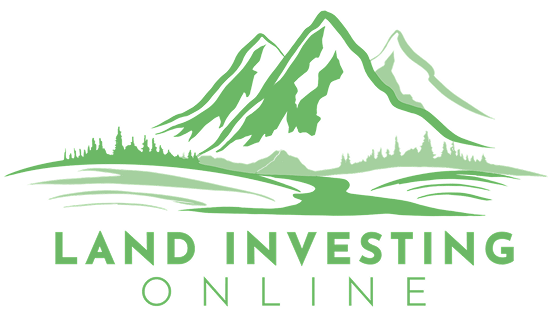The State of the Land Market in 2025: Prices, Rates, and Opportunities
Common Terminology Every Land Investor Needs to Know

As we approach the end of 2025, the real-estate and land-investing markets are showing signs of cautious optimism. Key indicators suggest that while we are not heading into a booming phase, conditions are aligning for strategic investors who know how to position themselves.
Below is a breakdown of what the data is showing, and what it means for those focused on land (farmland, lots, recreational/timber tracts) in particular.
Macro Backdrop
Mortgage rates remain elevated, which continues to put pressure on homebuyers.
Although the Federal Housing Finance Agency (FHFA) reports show modest annual home-price growth (about +2.8% year-over-year in May 2025) and even a slight monthly decline of 0.2% that month, the housing market is clearly cooling.

Source: Federal Housing Finance Agency (FHFA), Monthly Purchase-Only House Price Index, May 2025
For land investors, this matters in two ways:
- First, slower housing-market growth reduces some of the competitive pressure for raw land acquisitions tied to spec building/selling.
- Second, it means buyers who are building or using land as a stepping stone may become more selective, which puts a premium on well-positioned land.
Inflation remains above target and the economy is showing mixed signals, but the easing of some upstream variables (like rate spreads, builder sentiment) is pointing toward better conditions ahead.
The key takeaway: money isn’t cheap, but it’s less prohibitive than a few quarters ago.
Housing Lots & Residential Land
The data reflects a housing market that is neither collapsing nor booming, just stabilizing.
Builders and lot-developers in many markets are cautiously opportunistic. For example, the National Association of Home Builders (NAHB) housing-market sentiment index recently hit a six-month high, partly due to hopes for lower financing costs, though the index still remains below neutral territory.
What this means for residential-site land:
- Entitled and utility-ready parcels (lots with infrastructure in place) are increasingly desirable, buyers/developers want to reduce time-to-build.
- Raw or unprepared land will face more scrutiny and slower transaction velocity, unless priced accordingly.
- As traditional home-price growth slows, the value differential between cheaper entry land and finished product can create opportunity, provided you’re willing to manage the risk and timeline.
Farmland
The farmland category is perhaps the strongest segment for land investors right now.
According to the United States Department of Agriculture (USDA) Economic Research Service, U.S. farm real estate (land + structures) averaged $4,350 per acre in 2025, up 4.3% from 2024; cropland averaged ~$5,830/acre (+4.7%) and pastureland ~$1,920/acre (+4.9%).

United States Department of Agriculture (USDA) / Economic Research Service
However, the rate of increase has slowed compared to earlier years (for example, the 2021–22 surge saw double-digit jumps).
For land investors, that translates into:
- Stability and income potential: farmland remains a proven asset class with inflation-hedge appeal.
- Selective opportunity: value varies significantly by region, crop-type, water/irrigation infrastructure, and development pressure.
- Lower speculative growth outlook — if you’re buying expecting rapid appreciation, adjust your expectations. Long-term hold and cash flow matter more than “flip-to-profit.”
Recreational & Timberland
The recreational and timberland segments of the land market are less “industrial” than farmland, but they bring interesting dynamics:
- Lifestyle demand continues to drive recreation-oriented land purchases (hunting, getaways, off-grid).
- Timberland offers longer-horizon value, tied to log markets, mill demand, and regional supply chains. Recent tariff uncertainty on softwood imports has potential upside for domestic timber land.
Adding to the momentum, Rayonier and PotlatchDeltic recently announced an $8.2 billion merger, creating one of the largest timberland and land-resource companies in the country.
The deal signals continued institutional confidence in U.S. timberland as a long-term, income-producing, and diversifiable asset.
In short: while this isn’t a high-velocity flip market, it offers diversification and upside optionality, especially for investors comfortable with longer timelines and more intangible demand drivers (amenities, recreation, timber growth cycles).

What It Means for Investors
Bringing the data back to you, here are actionable conclusions based on the market signals:
- Financing tailwind: If interest rates ease even modestly (as many forecasters expect), it unlocks more purchasing power for buyers and helps align sellers’ expectations.
- Deal-flow improvement: We’re entering a period where motivated sellers (especially of raw land, lots, farms) will be more open. Batch your acquisitions now, prepare for spring closings.
- Packaging matters more than ever: Clean title, survey, access, utilities, entitlements; all count more in a slower growth market. You won’t get away with sloppy anatomy in your land deal.
- Focus on fundamentals: For farmland, soil, water, tenant quality. For lots , location, entitlements, build speed. For timber/rec land, access, amenities, optionality.
- Margin for error: Since appreciation will likely be moderate, structuring terms (seller carry, rate buy-downs, longer hold) is a smart hedge.
- Regional variation is huge: Don’t rely on national averages. Drill down into your target counties/states. Some markets will outperform, others underperform.
Final Thoughts
This is not a “fast money” market.
Instead, it’s a steady, selective, opportunity-rich environment, particularly for land investors who have sharp underwriting, ready-buyer pipelines, and asset discipline. The frenzy is gone; the serious deals remain.
As you navigate the remainder of 2025 and move into 2026, keep your focus on readiness, fundamentals, and timing. When other buyers are distracted or sidelined, you’ll be showing up with solutions, and that’s exactly when the best land deals are made.

Chat with a
land investing
advisor
Discuss any questions you have about land investing, our online community or courses!

